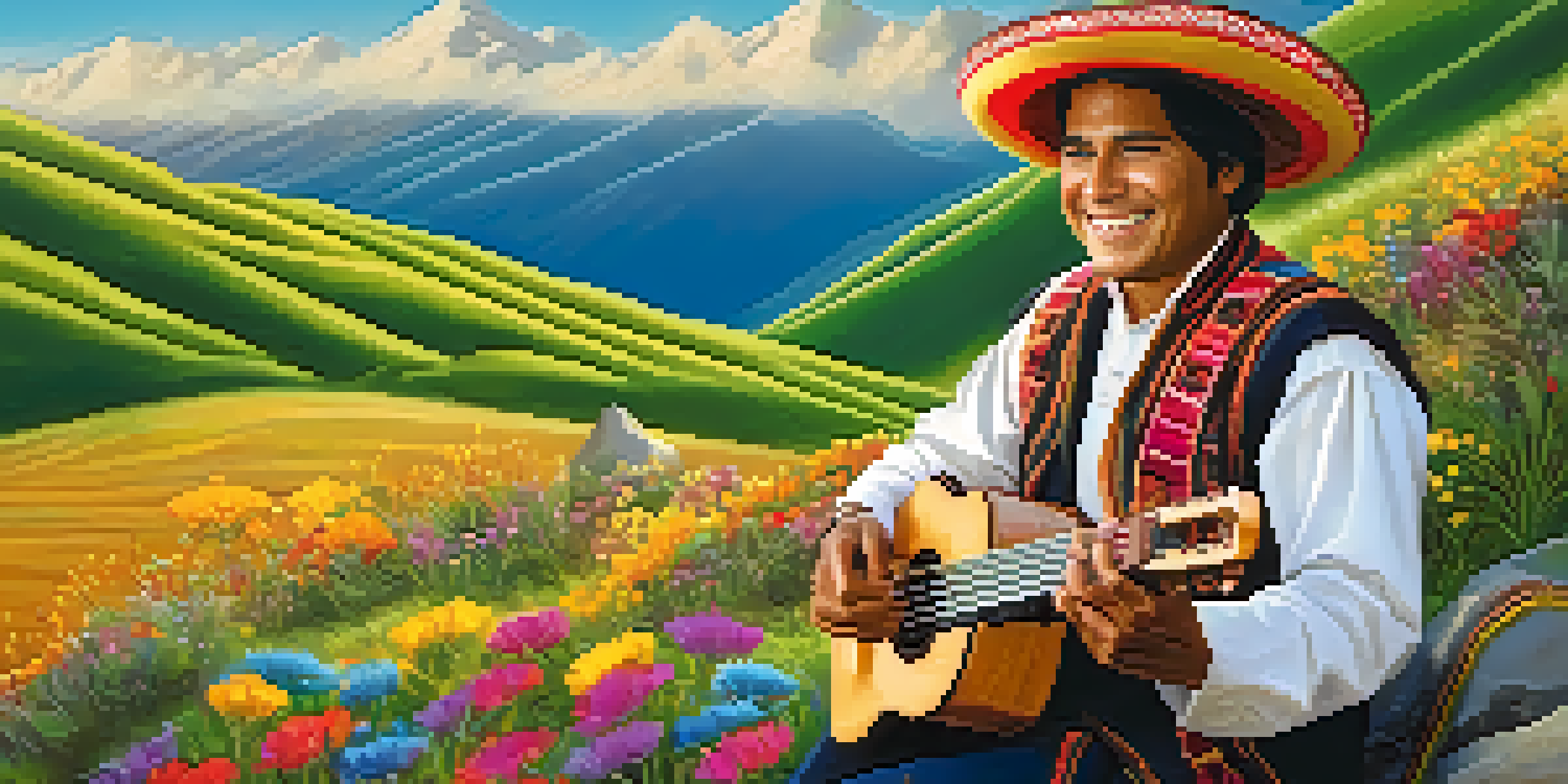Instruments of Peru: The Heartbeat of Traditional Music

Introduction to Peru's Musical Heritage
Peru's musical landscape is a vibrant tapestry woven with diverse sounds and rhythms. Traditional music is integral to the cultural identity of this South American nation, reflecting its history and traditions. From the Andes to the Amazon, each region contributes unique instruments that tell stories of their people.
The Charango: A Small Yet Mighty Instrument
The charango, a small string instrument resembling a ukulele, is made from the shell of an armadillo. Its bright, cheerful sound can be heard echoing through the mountains, often accompanying folk songs and dances. The charango's versatility allows it to adapt to various musical styles, making it a beloved choice among Peruvian musicians.
Diverse Instruments Define Peru's Music
Peru's musical heritage is characterized by a variety of traditional instruments, each contributing to its rich cultural identity.
The Pan Flute: A Symbol of Andean Music
Known locally as the 'zampona,' the pan flute is perhaps one of the most iconic instruments of the Andes. Crafted from bamboo tubes of varying lengths, it creates harmonious melodies that evoke the beauty of the Andean landscape. The pan flute is not just an instrument; it's a symbol of community, often played during festivals and celebrations.
The Cajón: The Heartbeat of Afro-Peruvian Rhythms
The cajón, a wooden box drum, has roots in Afro-Peruvian culture and adds a rhythmic depth to traditional music. Musicians sit on the cajón and strike its front face, producing a range of sounds from deep bass to sharp slaps. This instrument has become increasingly popular, bridging gaps between various music genres while remaining a staple in folk performances.
Cultural Significance of Traditional Music
Instruments like the charango, pan flute, and cajón not only create music but also symbolize community and shared cultural experiences.
The Bombo: A Drum with a Rich History
The bombo, a large double-headed drum, holds a significant place in the folklore of Peru. Traditionally made from wood and animal skin, it produces a deep, resonating sound that drives the rhythm of many Andean dances. Its presence is felt during rituals and celebrations, where it brings people together in a shared experience of joy and unity.
The Quena: The Soulful Andean Flute
The quena, a traditional Andean flute made from bamboo, is known for its haunting melodies that seem to capture the essence of the mountains. With six finger holes, this instrument allows for a range of expressive notes. Quena players often accompany themselves with other instruments, creating a rich soundscape that resonates with listeners.
Preserving Heritage Through Music
Today, the integration of traditional instruments into modern music and festivals helps preserve Peru's cultural legacy for future generations.
The Importance of Traditional Instruments Today
In a rapidly modernizing world, traditional instruments play a crucial role in preserving Peru's cultural heritage. Many musicians are integrating these instruments into contemporary music, ensuring their relevance for future generations. Festivals and workshops dedicated to traditional music keep these instruments alive, fostering a sense of pride and connection to the past.
Conclusion: The Legacy of Peru's Musical Instruments
Peru's traditional instruments are more than just tools for making music; they embody the spirit and history of its people. Each instrument tells a story, linking generations through shared melodies and rhythms. By embracing these instruments, Peru continues to celebrate its rich cultural legacy while inspiring new creative expressions.